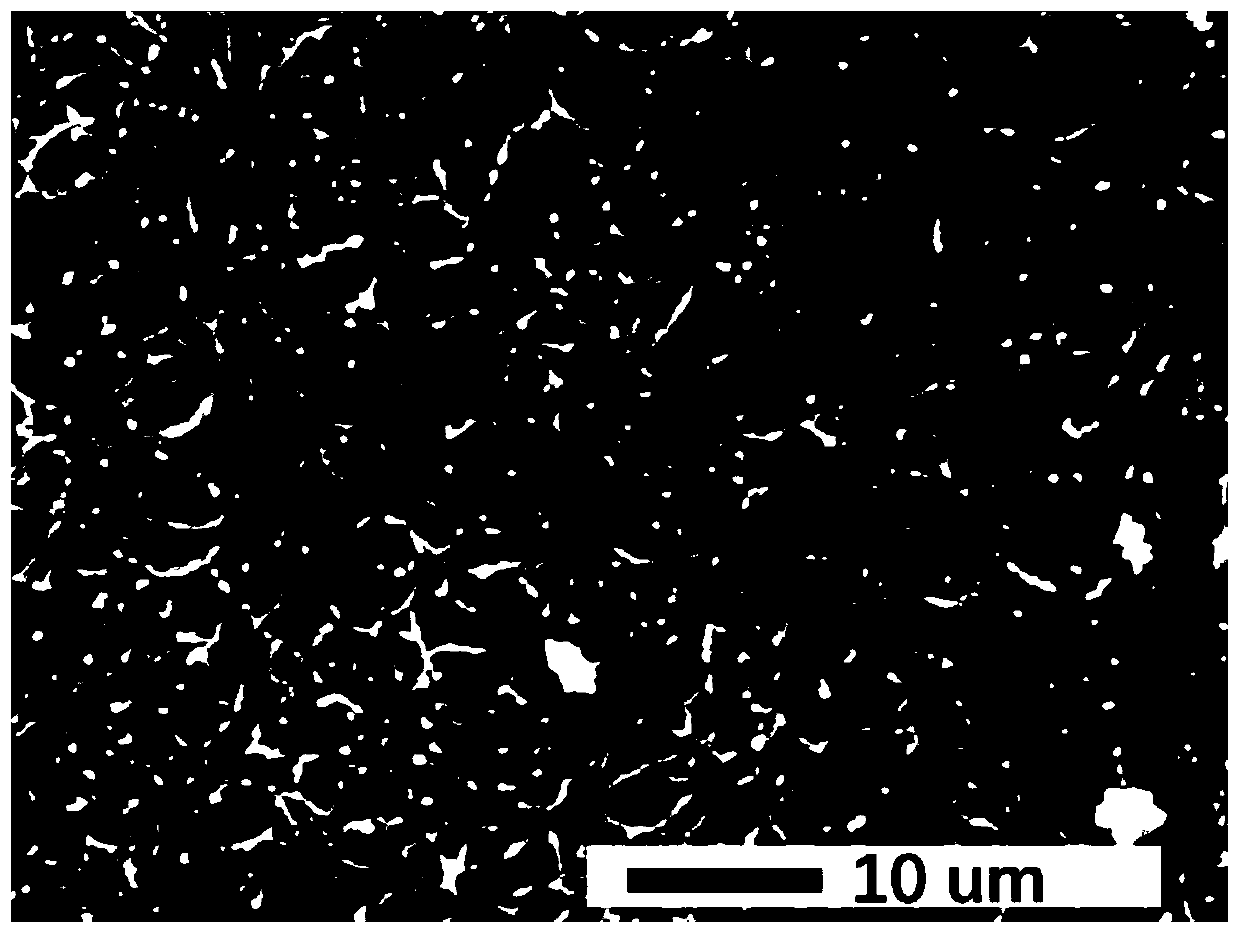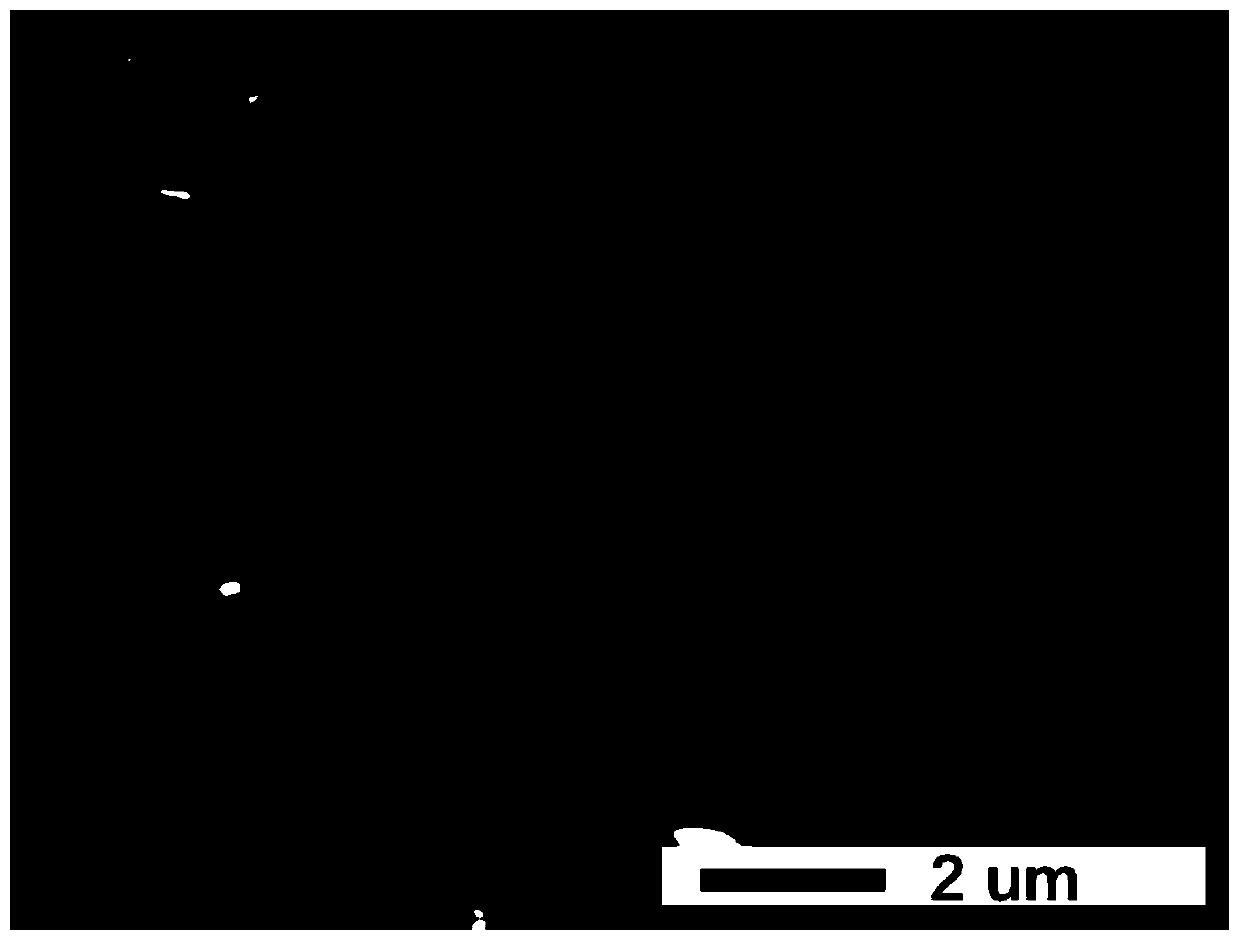High-throughput solvent-resistance interfacial polymerization composite membrane and preparing method thereof
A technology of interfacial polymerization and composite membrane, applied in the fields of organic solvent-resistant nanofiltration composite membrane and its preparation, interfacial polymer composite membrane and reverse osmosis membrane, which can solve the problem of large flux of separation membrane, reduction of reaction monomer diffusion speed, organic resistance Solvent problems, etc., to achieve the effect of simple process, good industrial practicability, and increased performance
- Summary
- Abstract
- Description
- Claims
- Application Information
AI Technical Summary
Problems solved by technology
Method used
Image
Examples
Embodiment 1
[0038] (1) Weigh 2 g of para-aramid fibers and dissolve them in a mixed solution system of 1 g potassium hydroxide and 97 g dimethyl sulfoxide, heat and stir at 25° C. to obtain aramid nanofiber casting solution with a concentration of 2 wt %;
[0039] (2) Coating the casting solution on the non-woven fabric with a scraper machine, the thickness of the scraper is 200 μm, then immersing the non-woven fabric coated with the polymer solution in deionized water, and forming a gel film after 2 minutes;
[0040] (3) Immerse the gel film in 0.01wt% piperazine aqueous solution for 1min, dry it in the air for 2min, then immerse the film in a 4wt% trimesoyl chloride n-hexane solution for 1min, and then treat it in an oven at 60°C for 5min A composite nanofiltration membrane is obtained.
[0041] Separation membrane performance test:
[0042] Separation membrane water flux test, water flux is under certain operating conditions, under unit pressure (P), unit time (t) permeates the volume...
Embodiment 2
[0051] (1) Weigh 2 g of para-aramid fibers and dissolve them in a mixed solution system of 1 g potassium hydroxide and 97 g dimethyl sulfoxide, heat and stir at 25° C. to obtain aramid nanofiber casting solution with a concentration of 2 wt %;
[0052] (2) Coating the casting solution on the non-woven fabric with a scraper machine, the thickness of the scraper is 200 μm, then immersing the non-woven fabric coated with the polymer solution in deionized water, and forming a gel film after 2 minutes;
[0053] (3) Immerse the gel film in 0.04wt% piperazine aqueous solution for 4min, dry it in the air for 2min, then immerse the film in a 1wt% trimesoyl chloride n-hexane solution for 10min, and then treat it in an oven at 90°C for 10min A composite nanofiltration membrane is obtained.
[0054] The prepared composite membrane water flux is 35L / (m 2 bar h), Na 2 SO 4 Rejection rate 99%, MgCl 2 The cut-off is 60%, NaCl cut-off is 17%; under the same cut-off condition, the flux of t...
Embodiment 3
[0056] (1) Weigh 2 g of para-aramid fibers and dissolve them in a mixed solution system of 1 g potassium hydroxide and 97 g dimethyl sulfoxide, heat and stir at 25° C. to obtain aramid nanofiber casting solution with a concentration of 2 wt %;
[0057] (2) The casting liquid is coated on the non-woven fabric by a doctor blade machine, the thickness of the scraper is 200 μm, and then the non-woven fabric coated with the polymer solution is immersed in a 0.1wt% piperazine aqueous solution, after 2min Form a gel film;
[0058] (3) Pour a trimesoyl chloride-n-hexane solution with a concentration of 1 wt% onto the hydrogel membrane containing 0.1 wt% piperazine for 10 min, and then treat it in an oven at 25° C. for 0 min to obtain a composite nanofiltration membrane.
[0059] The membrane flux of the prepared composite nanofiltration membrane is 42L / (m 2 bar h), Na 2 SO 4 Rejection rate 99%, MgCl 2 The cut-off is 75%, and the NaCl cut-off is 31%.
PUM
 Login to View More
Login to View More Abstract
Description
Claims
Application Information
 Login to View More
Login to View More - R&D
- Intellectual Property
- Life Sciences
- Materials
- Tech Scout
- Unparalleled Data Quality
- Higher Quality Content
- 60% Fewer Hallucinations
Browse by: Latest US Patents, China's latest patents, Technical Efficacy Thesaurus, Application Domain, Technology Topic, Popular Technical Reports.
© 2025 PatSnap. All rights reserved.Legal|Privacy policy|Modern Slavery Act Transparency Statement|Sitemap|About US| Contact US: help@patsnap.com


